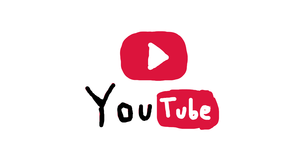The Next Big Thing in Online Video: Student Production
Post by Swaroop Raju, co-founder of eduCanon.
 If I were to ask you to list out the best creators of online video—the creators with the most impactful content and the highest potential to engage and educate students—you might start listing some of the YouTube stars who have become almost synonymous with online learning: Khan Academy, Crash Course, Bozemanscience, LearnZillion. If you read one of our earlier posts, you would rightfully include teacher-created screencasts on that list.
If I were to ask you to list out the best creators of online video—the creators with the most impactful content and the highest potential to engage and educate students—you might start listing some of the YouTube stars who have become almost synonymous with online learning: Khan Academy, Crash Course, Bozemanscience, LearnZillion. If you read one of our earlier posts, you would rightfully include teacher-created screencasts on that list.
New evidence, however, suggests that it is not just teachers who make engaging and relevant recordings. Students do too.
Why is that? Students have a way of making the content much more relevant to their classmates’ lives, consequently relating the content in a way that engages and excites their friends. More than that, because the student creator so recently had limited grasp of the material, he or she can describe the “aha” moment that helped the concept finally sink in.
Stepping beyond the video delivery, the actual creation process of videos engages the highest order of thinking. Every educator has likely seen the Bloom’s Revised Taxonomy and that “creating” holds the top level of the pyramid. With the new Common Core State Standards this is more important than ever due to the shift towards situational math and understanding the concepts behind each answer, as opposed to traditional formulaic math.
Suggested workflow for Students
1. Outline and Script: Make sure the students have a basic outline and potentially even a script for the major concepts of the video before jumping straight in. It is easy to overestimate the material you can cover in a video without an outline.
2. Screencast or Film: I recommend a simple screencasting program like Screencast-O-Matic which requires little time to learn. With a quick click of a button, the audio and visuals on the screen will be automatically recorded. At the end, the video will be exported to YouTube.
3. Editing and Question Embeds: Have the students use a program like eduCanon to crop out the parts of the video they don’t want to display and to embed questions into the video. Question creation just like video creation engages higher order thinking.
4. Share: Now that each student (or group of students) has their own online tutorial, have them share the lesson with other groups in the classroom. The student can view the eduCanon monitor data to see how their friends are performing on the lesson and help troubled students out in class.
Student-generated online tutorials can cover virtually any topic (i.e. perfect squares, how to divide fractions, or even built off of a music video).
Until next time!
See also:
How Teachers Can Create Videos That Engage Students

I have students create a digital reflection journal and some choose to make screencasts explaining a topic. Interesting thing happened today when a student made one and asked that I share it with the class. I showed it to the class and the students actually found the misconceptions / errors that the student had made. It was a learning moment and I talked about the value of mistakes.
Nice! Another good reason to have the teacher engaged! Maybe we should be writing all these down during this time of hyper teacher accountability across the US.